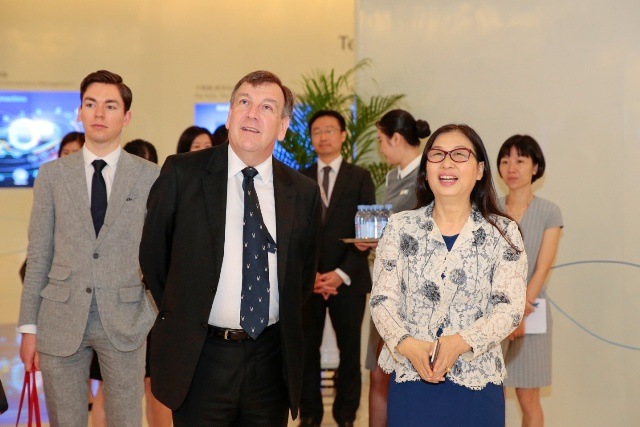Secretary of State John Whittingdale visits Huawei HQ in Shenzhen, China
[Shenzhen, China, May 20, 2016] The Rt Hon John Whittingdale MP, Secretary of State for Culture, Media and Sport, is today visiting the global headquarters of Huawei, the leading ICT company, in Shenzhen, China.

UK Secretary of State John Whittingdale MP and Huawei Chairman Ms Sun Yafang in the Huawei Exihibition Hall during his visit.
Mr Whittingdale will be greeted and accompanied by Ms Sun Yafang, Huawei Chairman and given a tour of Huawei’s exhibition hall, where it demonstrates some of the technology breakthroughs it has developed over its 29-year history. Following the technology showcase Mr Whittingdale will then have a lunch meeting with Ms Chen Lifang, Huawei Group Board Director and Senior Vice-President, and Huawei UK board Director.
Speaking about his visit to Huawei, Secretary of State for Culture, Media and Sport John Whittingdale MP, said: “Huawei's technology has played a significant role in the development of telecoms services in the UK, including the roll-out of 4G mobile networks. I’m looking forward to learning more about its innovative work and discussing how we can encourage Chinese businesses such as Huawei to continue investing and growing in the UK.”
Chen Lifang said: “Huawei welcomes Mr Whittingdale to Shenzhen and we look forward to discussing areas of co-operation and mutual benefit for the future. The UK is one of Huawei’s most important markets globally and we value our strong relationship with the British Government, customers and partners, and we are making joint efforts to build a ‘Better Connected UK’.”
Huawei, which this year celebrates 15 years of operations in the UK, opened its first office in London in 2001 and counts among its customers such major UK firms as BT, Vodafone and TalkTalk. In 2012 Huawei committed to delivering a £1.3bn five year investment. This pledge included increasing R&D staffing levels to 300 roles and investing more than US$200 million in R&D by 2017.

